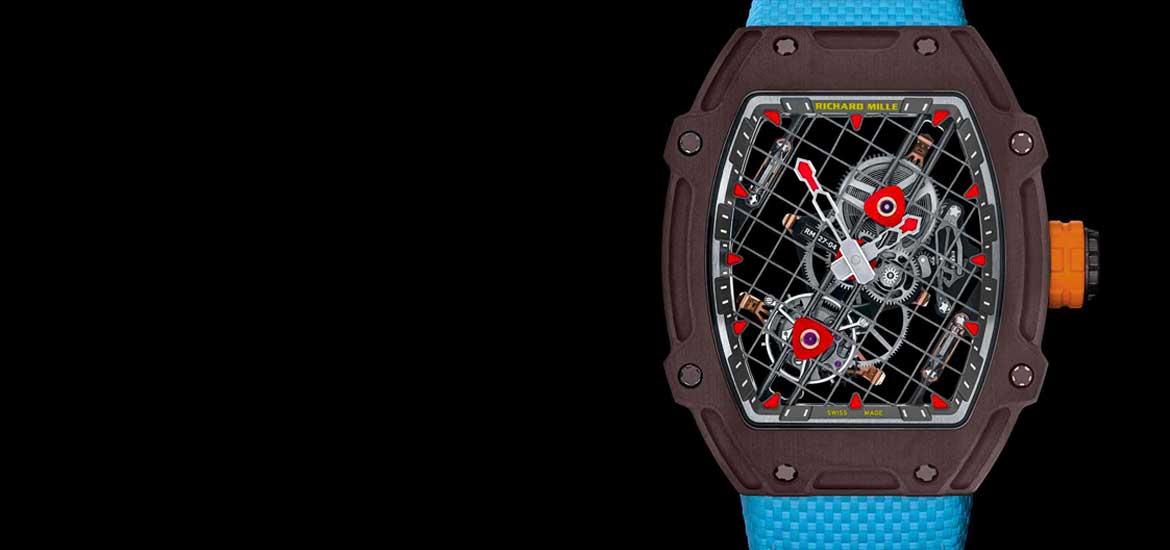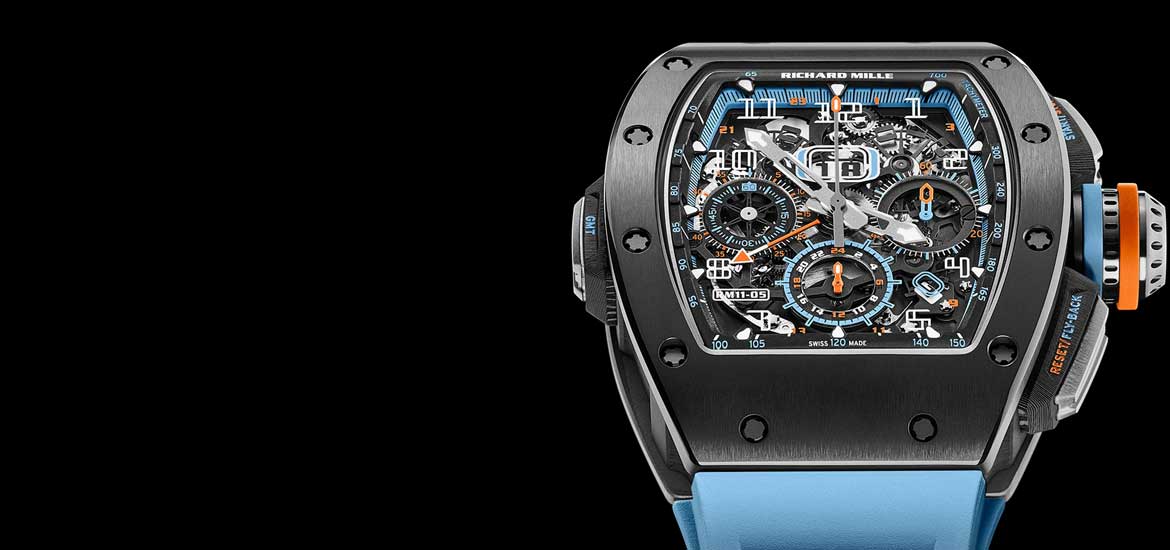Evaluate and sell immediately
If you want to sell your watch now or have a market evaluation fill out the form, our experts will contact you within 24h
Upload
Error
A worldwide showcase for the purchase and sale of certified and guaranteed luxury watches


Information center

Term which is related to the movement that indicates how many positions have been set: the higher the number of settings, the higher the quality of the mechanics.
Phenomenon in which the spring of the charge of the watch is subject to and which makes it loses its elasticity. The more spirals that can be counted on the spring when it is out of the barrel, the less the elastic force that is left. In case of many "permanent winding" turns then the spring must be replaced.
The pathed line of the regulation organ from one extremity to another. The watches can also be distinguished by the number of alternations per hour (A/h) that appear. Based on construction, the more A/h you have, the more precision you have.
The pathed line of the regulation organ from the resting point to one of the extremities. Wrist watches with balance wheel can be given back to the customer after revision, having a range between 180° and 315°.
Watch that indicates the time with hands. Opposite: digital.
Protuberance of the case realized in various forms and dimensions. Together with the spring lug, it ties the case of the bracelet (or of the watchband).
Cylinder that goes from one loop to the other, that ties the case to the bracelet (or watchband). It may be fixed or mobile; in this last case, inside it is possible to find a spring that pushes out the cylinder that goes to penetrate the lug.
Resistance that the bodies have when they are in contact with each other. Friction causes usage, which may be contrasted with adequate lubrification.
This is said of watches that are charged by arm movement. A very common complication.
Mechanism necessary to contain the motor spring or mainspring. It has the shape of a drum with at one extremity at the first wheel of the mechanism train.
Body of: fly wheel, axle, spiral and plate. Its swinging is necessary to divide time in equal fractions.
Ring in which mechanisms rotate. Is necessary to reduce friction as much as possible. It can be made of brass, bronze or synthetic ruby.
Register in which the days of the year are divided into weeks, months and other indications are written down. Complications can vary according to watch. Solar Calendar: date calculator, day-date, complete, yearly, perpetual. Moon-phase calendar.
Indicates the date correctly of all months of 30 and 31 days; for February it is necessary to manually change the date.
The date, the day and the month are indicated. All months have 31 days, therefore those with 30 days and February must be corrected manually.
Shows lunar phases
Always shows correctly date, day, month and year. It does not need manual correction not even for leap years, until 2100 which is not a leap year.
In watchmaking, the calibre indicates the constructor and the ID number of the movement. In traditional mechanics, it is a measurement instrument.
Old-fashioned instrument that measures time intervals but that does not tell you the time directly.
Functions that the basic manual charge watch gives you as well as the time, the minutes and the seconds.
Organ that allows charging through movement, replacing of time and date. To protect the mechanism from possible seepage, seals like those used in underwater watches are used. It is closed with a screw.
Tool for setting watches (individuating possible timing advance or lateness) and discovering defects.
Watch that allows the measurement of a period of time.
Particularly precise watch which undergoes trials, regulated in different positions and at various temperatures. After this, it obtained a regular certificate of functioning.
Funtion that indicates the date (the day) on the quadrant.
Small window on the quadrant which indicates the year.
Small window on the quadrant which indicates the month.
Small window which indicates the day of the week.
Small window on the quadrant which indicates the year.
Complication which indicates the difference in minutes between the legal time and the real solar time.
Ability of the bodies to gain their original form after having had a deformation. In mechanic watches this elastic property of the spring to give energy to the motor is used.
Complication that indicates the phase in which the moon is.
Function which, pressing a button, allows the chronograph to get the mechanism to start over without making it stop.
Represents the number of swings of the regulating organ. It refers to the hour in mechanical watches and to seconds in quartz ones.
Organ placed on the bezel or the case tha is necessary for a series of calculations. In underwater watches, it indicates the immersion time and must turn anti-clockwise only.
Greenwich Mean Time (Average time of Greenwich). Complication able to get you to see different time-zones.
Engraving carried out by machine on the face. The geometric designs are made-up of lines that cross over repeatedly forming a thick weave.
Engraving carried out by hand on the face. The geometric designs are made-up of lines (slightly different) that cross over repeatedly forming a thick weave.
First automatic wrist movement that took the name of its inventor (1926).
This is said of a watch designed to resist small squirts of water as it does not have crown and back cover closed with a screw.
The system most used for the protection against collision.
Part of a watch made up of a wheel, a pinion and an axle.
Present in automatic watches, allows the transmission only one way into the barrel, of the movement which comes from the motor that turns both ways.
ISO is the International Standardization Organization.
Characteristic of regulating organ for which the swinging in equal times is carried out.
In watchmaking this indicates the synthetic stone that is used as arm for some pivots and some levers. Also used to indicate the total number of rubies present in a movement. Sometimes this indication is present on the mechanics and/or the quadrant.
Collision protection system. This is a spring, built in different forms, put in to hold the counter stone of the balance wheel. When the watch undergoes a collision, this spring opens up and allows the ruby to move and prevent the balance wheel to undergo the collision.
This is part of the indicator organ together with the face. It shows in an analogic manner the hours, minutes and seconds. In underwater watches it is larger than normal and luminescent.
Hands which are visible at night time and in the dark.
Old fashioned French measurement, it is still used today to indicate the diameter of the movements. A line (indicated with ''': 3 close apostrophes) is equal to 2.255 mm. To indicate inferior or intermediate measures the fractions: 10'''1/4 are used.
An essential practice so as to reduce as much as possible the friction which causes the wearing out of the components which are in movement.
Metal or plastic ring that fixes the glass which protects the face.
Metal organ which produces a sound when it is beaten upon a gong or a bell.
This is said of a watch that works with a swinging pendulum organ or with a balance wheel.
Old-fashioned tool to measure time, which may be used exclusively with the Sun.
Supplementary part of the basic movement, through which you may add one or more complications reducing adaptments to minimum.
Harmonic steel foil which has the shape of a spiral or a treble clef. It supplies energy to the watch, pushing the barrel in which it is contained.
These are the mechanisms contained inside watches. Many types of movements have been invented: mechanical, automatic, pendulum, turing fork, quartz,...This is the body of the organ motor, wheelwork, exhausts, the regulating organ, as well as other organs like the complications.
Material with which spirals were built in the past. Iron alloy, nickel, berylium, etc...
Scale for measurement instruments that allows the visualization of fractions of millimeters.
Cavity, obtained from the bearing, which is necessary to hold the oil avoiding leakage.
Instead of being perfectly cylindrical, the internal side of the swivel is smoothed and rounded so as to reduce friction. This is used especially in high quality watches.
The part of the mechanism having the function to produce and supply energy.
This changes according to movement but the function remains the same: dividing time in equal fractions so as to guarantee watch precision. The regulating organs used are generally the pendulum, the balance wheel and quartz.
A movement made up of two alternations: one way and return of the regulating organ.
Defects in the swival that wears out; to avoid this hard stone bearings are used (rubies).
A type of watch/clock that uses the same-name pole with lense as swinging organ.
Final part of the axis of a wheel that turns inside a support made of ruby. It is thin so as to reduce friction but, because of this, they are also very fragile.
Supplies energy to the wall or table clock making it turn inside the drum to which it is connected through a rope or a chain.
Part of a mechanism, it has less teeth than the wheel and is usually derived from the axle.
The body of the impulse disk and the safety disk that is put under pressure by the balance wheel axle.
Part of the mechanism that supports the bridges and all the components of the movement.
Together with the platen puts together the mechanisms. These are held in position by specific pivots and fixed with screws. Thanks to the bridges it is possible to dismantle even only a small part of the movement.
Recognition that is assigned by the City of Geneva to watches, that distinguish themselves based on certain characteristics like the workmanship and functioning.
Is necessary to make the complications of the watch function, and it is equipped with a screw closure in underwater watches.
Together with the hands is the main indication organ. It usually made up of a brass disk (wrist watch) and held together by small lugs on the back that are fixed in the platen. In the back part there are numbers, indexes, scales, etc.. These can be reprinted or restored.
This is said of watches that use the swinging of quartz when it undergoes electrical tension. The energy is given by the battery.
Puts together the axle of the wheel to the crown or, in the case of balance wheel, to the fly-wheel.
A fly-back hand chronograph has two supplementary second hands that cover the chronograph hands. The functioning allows the blocking of one of the two hands covered by the second counter, allowing the measurement of two events at the same time.
Very precise pendulum that is used by old watchmakers to regulate the watches which are being repaired.
A series of operations that are necessary to regulate the time of the watch.
A series of operations aimed to correctly recover the timing of the watch and the good condition of its components. The necessary interventions are the dismantling of the movement, cleaning, reassembling, lubrification, elimination of defects, regulation control and water resistance.
A complication through which it is possible to get a sound signalling of the time. This can occur by comanding with button pressure or by pulling a little strap.
The time between a full charge of the spring and the stopping of the watch. It is a complication that allows one to see the autonomy of time telling that the watch still has at that moment on the watch face. That is: charge reserve.
Having a semi-circular shape, it swings in the automatic watch thanks to arm movements. The charging occurs in one or both ways depending on construction.
Hard stone, today built artificially, used to hold the lubricant that will reduce friction and usage.
Body of wheels that come together making up the mechanism train.
Watch, usually analog, that changes the indication of hours and occurs semi-instantly as the result of a sudden jumping action.
Organ located between the time train and the swinging organ. It has the task of controlling the speed of the wheelwork, counting the swings and keeing the regulating organ working. (For example: 60 swings = 1 minute)
Embelishment of the watch for which many of its parts (especially platens and bridges) are pierced. To show this the back cover and the face (or both) are see through.
Thin metal blade covered with the shape of a spiral with Archimedes. The internal extremity terminates with a bulb screw base that should be assembled on the axis of the balance wheel. The external extremity terminates with the python that is fixed to the balance wheel bridge. The task of the spiral is to make the movement of the entire balance wheel synchronized.
This is said of a watch with certain water resistant characteristics. Each example must be tested individually showing a resistance of at least 10 ATM and must have a crown, a back cover and eventual buttons that close like screws. The Law ISO 6425 defines the prerequisites that underwater watches must have.
Forerunner of the mechanical watch. It was created by the monks to wake-up for prayer. This term indicates a complication: the function is the same as an alarm clock.
This is an abstract definition: we all know what it is but we don't know how to explain it. Einstein defined it as the fourth dimension.
Complication with which the unbalance of the balance wheel is compensated. In a mobile cage, having the center of rotation in the balance wheel itself, the balance wheel, the anchor and the exhaust wheel are contained.
Body of mechanisms from the motor organ to the escapement wheel.
Movement with width as reduced as possible and therefore also adjective of the watches that houses it and assumes its characteristics. The manual charge movements must be at maximum 2 mm; the automatic charge movements around 2,5 - 3 mm; the cases about 4-6 mm. In other words: ultra-flat.
Usage of the various parts of the mechanism, due to a lacking or an incorrect lubrication.
Present in some professional underwater watches to allow the expelling of helium during reclimbing phase.
Covers and protects the face from external agents. Can have various forms and be of different material, even plastic.
Small ring precisely fixed on the axle of the balance wheel that holds the spiral.
Organ with heavier external part. In the balance wheel the shape of the wheel is held together to the axle with operating levers. The rotor is a fly-wheel.
Combination of tungsten, carbonium, cobalt and titanium: it is a very hard and heavy metal (it can be wrought only with grindstone): in watchmaking it is used for the side part by the rotor.
Characteristic of a watch that is resistant to water.
Starting point of the division of the face: it corresponds to 12 o'clock. It is used to indicate the starting point of the big hands of the chronograph.
Point in which a vertical comes to be which meets a heavenly body.
